Choosing a Gaming CPU: Single + Multi-GPU at 1440p, April 2013
by Ian Cutress on May 8, 2013 10:00 AM ESTCPUs, GPUs, Motherboards, and Memory
For an article like this, getting a range of CPUs, which includes the most common and popular, is very important. I have been at AnandTech for just over two years now, and in that time we have had Sandy Bridge, Llano, Bulldozer, Sandy Bridge-E, Ivy Bridge, Trinity and Vishera, of which I tend to get supplied the top end processors of each generation for testing. (As a motherboard reviewer, it is important to make the motherboard the limiting factor.) A lot of users have jumped to one of these platforms, although a large number are still on Wolfdale (Core2), Nehalem, Westmere, Phenom II (Thuban/Zosma/Deneb) or Athlon II.
I have attempted to pool all my AnandTech resources, contacts, and personal resources together to get a good spread of the current ecosystem, with more focus on the modern end of the spectrum. It is worth noting that a multi-GPU user is more likely to have the top line Ivy Bridge, Vishera or Sandy Bridge-E CPU, as well as a top range motherboard, rather than an old Wolfdale. Nevertheless, we will see how they perform. There are a few obvious CPU omissions that I could not obtain for this first review which will hopefully be remedied over time in our next update.
The CPUs
My criteria for obtaining CPUs was to use at least one from the most recent architectures, as well as a range of cores/modules/threads/speeds. The basic list as it stands is:
AMD |
|||||||
| Name |
Platform / Architecture |
Socket |
Cores / Modules (Threads) |
Speed | Turbo | L2/L3 Cache | |
|---|---|---|---|---|---|---|---|
| A6-3650 | Llano | FM1 | 4 (4) | 2600 | N/A | 4 MB / None | |
| A8-3850 | Llano | FM1 | 4 (4) | 2900 | N/A | 4 MB / None | |
| A8-5600K | Trinity | FM2 | 2 (4) | 3600 | 3900 | 4 MB / None | |
| A10-5800K | Trinity | FM2 | 2 (4) | 3800 | 4200 | 4 MB / None | |
| Phenom II X2-555 BE | Callisto K10 | AM3 | 2 (2) | 3200 | N/A | 1 MB / 6 MB | |
| Phenom II X4-960T | Zosma K10 | AM3 | 4 (4) | 3200 | N/A | 2 MB / 6 MB | |
| Phenom II X6-1100T | Thuban K10 | AM3 | 6 (6) | 3300 | 3700 | 3 MB / 6 MB | |
| FX-8150 | Bulldozer | AM3+ | 4 (8) | 3600 | 4200 | 8 MB / 8 MB | |
| FX-8350 | Piledriver | AM3+ | 4 (8) | 4000 | 4200 | 8 MB / 8 MB | |
Intel |
|||||||
| Name | Architecture | Socket |
Cores (Threads) |
Speed | Turbo | L2/L3 Cache | |
| E6400 | Conroe | 775 | 2 (2) | 2133 | N/A | 2 MB / None | |
| E6700 | Conroe | 775 | 2 (2) | 2667 | N/A | 4 MB / None | |
| Celeron G465 | Sandy Bridge | 1155 | 1 (2) | 1900 | N/A | 0.25 MB / 1.5 MB | |
| Core i5-2500K | Sandy Bridge | 1155 | 4 (4) | 3300 | 3700 | 1 MB / 6 MB | |
| Core i7-2600K | Sandy Bridge | 1155 | 4 (8) | 3400 | 3800 | 1 MB / 8 MB | |
| Core i3-3225 | Ivy Bridge | 1155 | 2 (4) | 3300 | N/A | 0.5 MB / 3 MB | |
| Core i7-3770K | Ivy Bridge | 1155 | 4 (8) | 3500 | 3900 | 1 MB / 8 MB | |
| Core i7-3930K | Sandy Bridge-E | 2011 | 6 (12) | 3200 | 3800 | 1.5 MB / 12 MB | |
| Core i7-3960X | Sandy Bridge-E | 2011 | 6 (12) | 3300 | 3900 | 1.5 MB / 15 MB | |
| Xeon X5690 | Westmere | 1366 | 6 (12) | 3467 | 3733 | 1.5 MB / 12 MB | |
A small selection
There omissions are clear to see, such as the i5-3570K, a dual core Llano/Trinity, a dual/tri module Bulldozer/Piledriver, i7-920, i7-3820, or anything Nehalem. These will hopefully be coming up in another review.
The GPUs
My first and foremost thanks go to both ASUS and ECS for supplying me with these GPUs for my test beds. They have been in and out of 60+ motherboards without any issue, and will hopefully continue. My usual scenario for updating GPUs is to flip AMD/NVIDIA every couple of generations – last time it was HD5850 to HD7970, and as such in the future we will move to a 7-series NVIDIA card or a set of Titans (which might outlive a generation or two).
ASUS HD 7970 (HD7970-3GD5)
The ASUS HD 7970 is the reference model at the 7970 launch, using GCN architecture, 2048 SPs at 925 MHz with 3GB of 4.6GHz GDDR5 memory. We have four cards to be used in 1x, 2x, 3x and 4x configurations where possible, also using PCIe 3.0 when enabled by default.
ECS GTX 580 (NGTX580-1536PI-F)
ECS is both a motherboard manufacturer and an NVIDIA card manufacturer, and while most of their VGA models are sold outside of the US, some do make it onto etailers like Newegg. This GTX 580 is also a reference model, with 512 CUDA cores at 772 MHz and 1.5GB of 4GHz GDDR5 memory. We have two cards to be used in 1x and 2x configurations at PCIe 2.0.
The Motherboards
The CPU is not always the main part of the picture for this sort of review – the motherboard is equally important as the motherboard dictates how the CPU and the GPU communicate with each other, and what the lane allocation will be. As mentioned on the previous page, there are 20+ PCIe configurations for Z77 alone when you consider some boards are native, some use a PLX 8747 chip, others use two PLX 8747 chips, and about half of the Z77 motherboards on the market enable four PCIe 2.0 lanes from the chipset for CrossFireX use (at high latency).
We have tried to be fair and take motherboards that may have a small premium but are equipped to deal with the job. As a result, some motherboards may also use MultiCore Turbo, which as we have detailed in the past, gives the top turbo speed of the CPU regardless of the loading.
As a result of this lane allocation business, each value in our review will be attributed to both a CPU, whether it uses MCT, and a lane allocation. This would mean something such as i7-3770K+ (3 - x16/x8/x8) would represent an i7-3770K with MCT in a PCIe 3.0 tri-GPU configuration. More on this below.
For Sandy Bridge and Ivy Bridge: ASUS Maximus V Formula, Gigabyte Z77X-UP7 and Gigabyte G1.Sniper M3.

The ASUS Maximus V Formula has a three way lane allocation of x8/x4/x4 for Ivy Bridge, x8/x8 for Sandy Bridge, and enables MCT.
The Gigabyte Z77X-UP7 has a four way lane allocation of x16/x16, x16/x8/x8 and x8/x8/x8/x8, all via a PLX 8747 chip. It also has a single x16 that bypasses the PLX chip and is thus native, and all configurations enable MCT.
The Gigabyte G1.Sniper M3 is a little different, offering x16, x8/x8, or if you accidentally put the cards in the wrong slots, x16 + x4 from the chipset. This additional configuration is seen on a number of cheaper Z77 ATX motherboards, as well as a few mATX models. The G1.Sniper M3 also implements MCT as standard.
For Sandy Bridge-E: ASRock X79 Professional and ASUS Rampage IV Extreme
The ASRock X79 Professional is a PCIe 2.0 enabled board offering x16/x16, x16/x16/x8 and x16/x8/x8/x8.
The ASUS Rampage IV Extreme is a PCIe 3.0 enabled board offering the same PCIe layout as the ASRock, except it enables MCT by default.
For Westmere Xeons: The EVGA SR-2
Due to the timing of the first roundup, I was able to use an EVGA SR-2 with a pair of Xeons on loan from Gigabyte for our server testing. The SR-2 forms the basis of our beast machine below, and uses two Westmere-EP Xeons to give PCIe 2.0 x16/x16/x16/x16 via NF200 chips.
For Core 2 Duo: The MSI i975X Platinum PowerUp and ASUS Commando (P965)
The MSI is the motherboard I used for our quick Core 2 Duo comparison pipeline post a few months ago – I still have it sitting on my desk, and it seemed apt to include it in this test. The MSI i975X Platinum PowerUp offers two PCIe 1.1 slots, capable of Crossfire up to x8/x8. I also rummaged through my pile of old motherboards and found the ASUS Commando with a CPU installed, and as it offered x16+x4, this was tested also.
For Llano: The Gigabyte A75-UD4H and ASRock A75 Extreme6
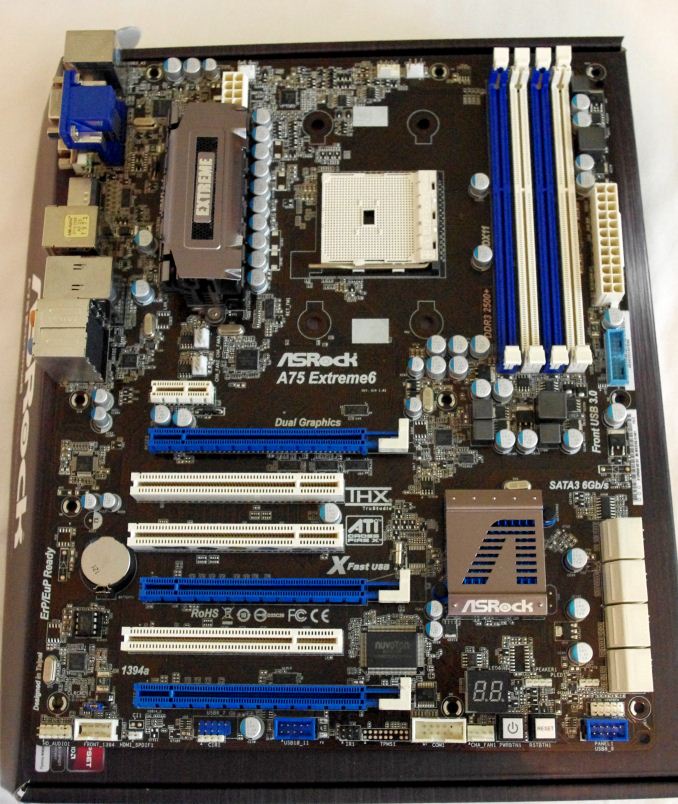
Llano throws a little oddball into the mix, being a true quad core unlike Trinity. The A75-UD4H from Gigabyte was the first one to hand, and offers two PCIe slots at x8/x8. Like the Core 2 Duo setup, we are not SLI enabled.
After finding an A8-3850 CPU as another comparison point for the A6-3650, I pulled out the A75 Extreme6, which offers three-way CFX as x8/x8 + x4 from the chipset as well as the configurations offered by the A75-UD4H.
For Trinity: The Gigabyte F2A85X-UP4
Technically A85X motherboards for Trinity support up to x8/x8 in Crossfire, but the F2A85X-UP4, like other high end A85X motherboards, implements four lanes from the chipset for 3-way AMD linking. Our initial showing on three-way via that chipset linking was not that great, and this review will help quantify this.
For AM3: The ASUS Crosshair V Formula
As the 990FX covers a lot of processor families, the safest place to sit would be on one of the top motherboards available. Technically the Formula-Z is newer and supports Vishera easier, but we have not had the Formula-Z in to test, and the basic Formula was still able to run an FX-8350 as long as we kept the VRMs cool as a cucumber. The CVF offers up to three-way CFX and SLI testing (x16/x8/x8).
The Memory
Our good friends at G.Skill are putting their best foot forward in supplying us with high end kits to test. The issue with the memory is more dependent on what the motherboard will support – in order to keep testing consistent, no overclocks were performed. This meant that boards and BIOSes limited to a certain DRAM multiplier were set at the maximum multiplier possible. In order to keep things fairer overall, the modules were adjusted for tighter timings. All of this is noted in our final setup lists.
Our main memory testing kit is our trusty G.Skill 4x4GB DDR3-2400 RipjawsX kit which has been part of our motherboard testing for over twelve months. For times when we had two systems being tested side by side, a G.Skill 4x4GB DDR3-2400 Trident X kit was also used.
For The Beast, which is one of the systems that has the issue with higher memory dividers, we pulled in a pair of tri-channel kits from X58 testing. These are high-end kits as well, currently discontinued as they tended to stop working with too much voltage. We have sets of 3x2GB OCZ Blade DDR3-2133 8-9-8 and 3x1GB Dominator GT DDR3-2000 7-8-7 for this purpose, which we ran at 1333 6-7-6 due to motherboard limitations at stock settings.
To end, our Core 2 Duo CPUs clearly gets their own DDR2 memory for completeness. This is a 2x2GB kit of OCZ DDR2-1033 5-6-6.


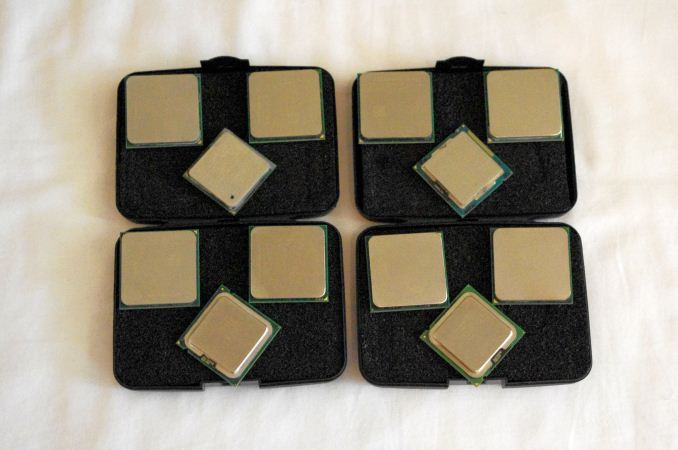
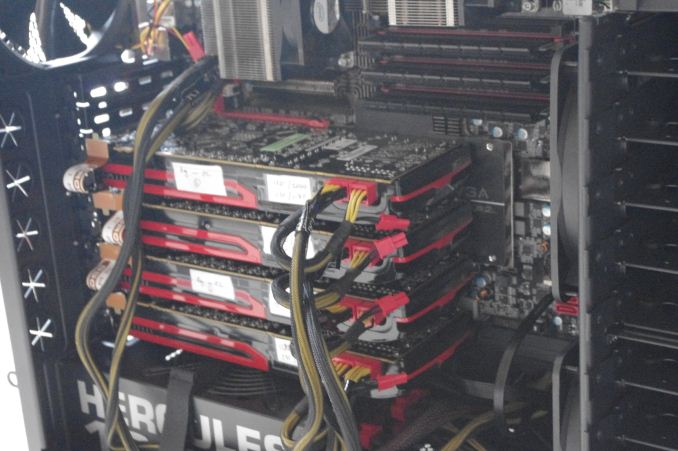
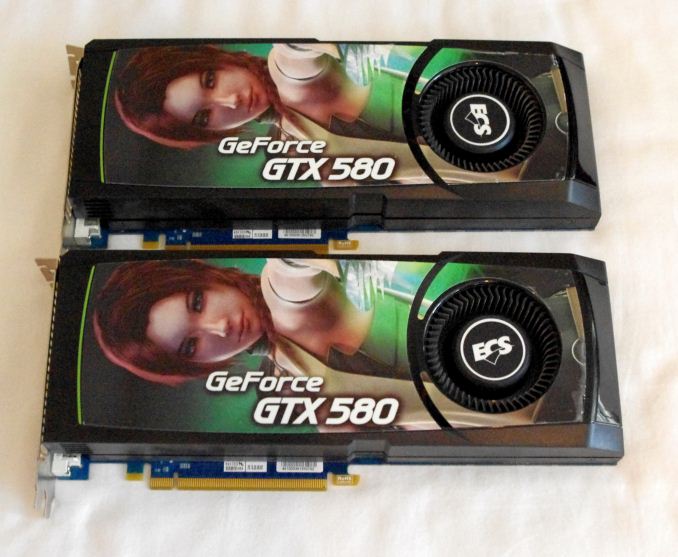
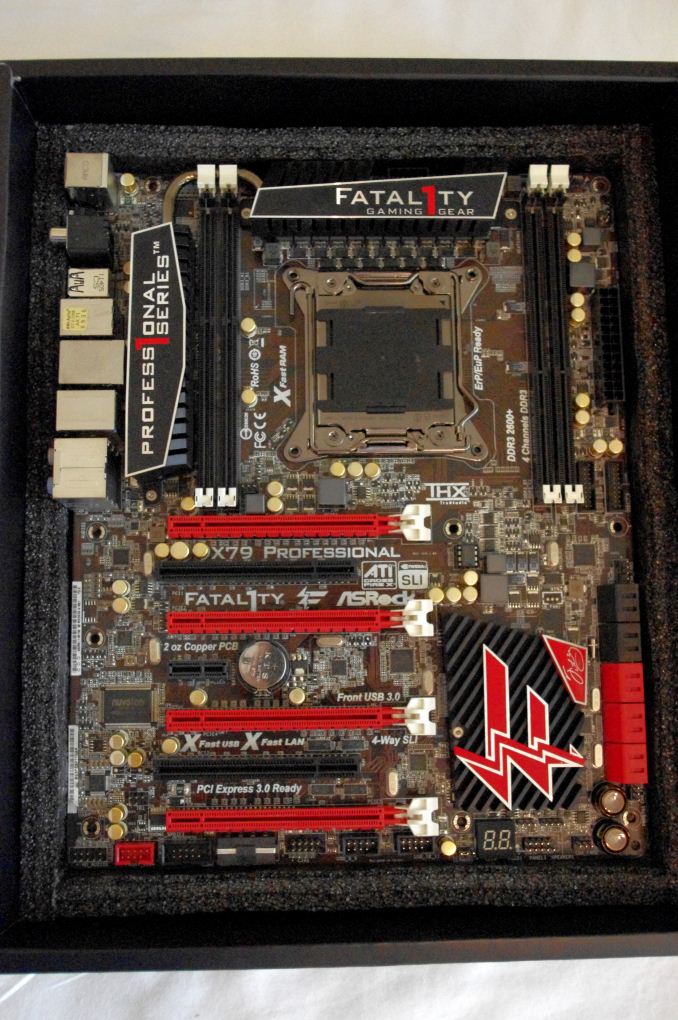
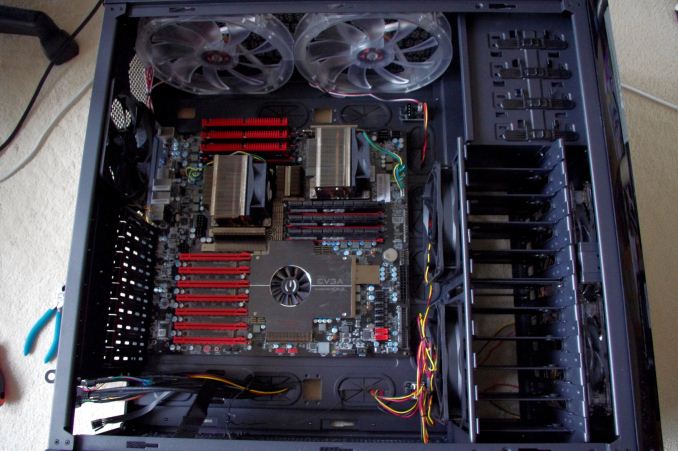
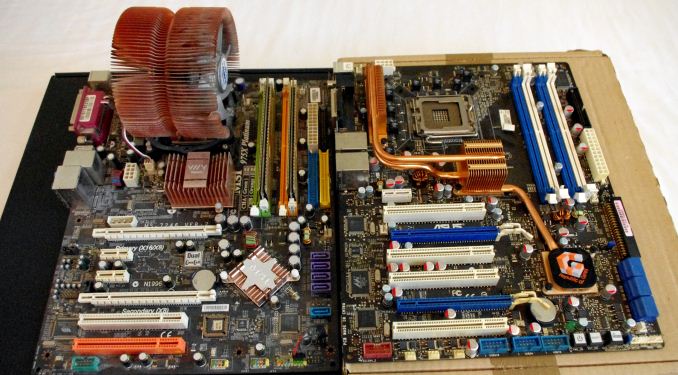
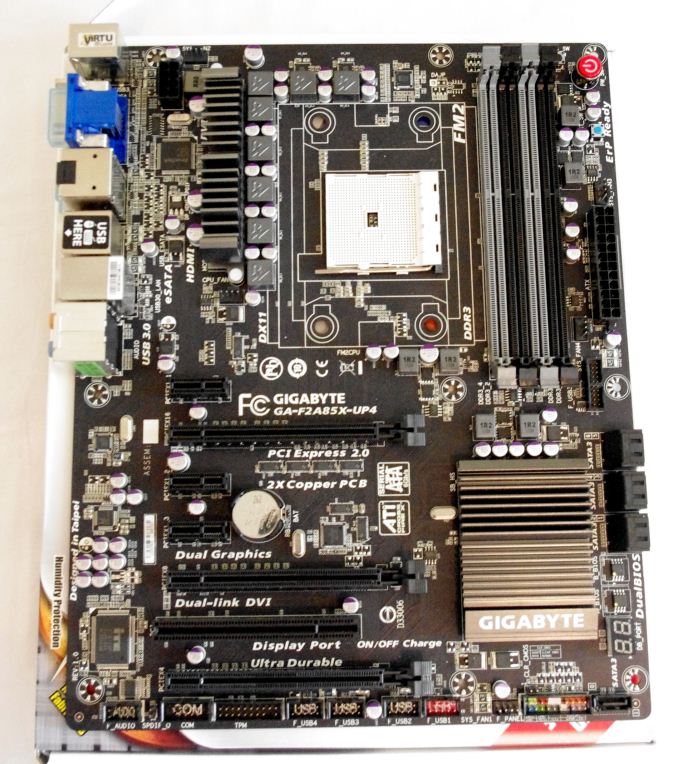
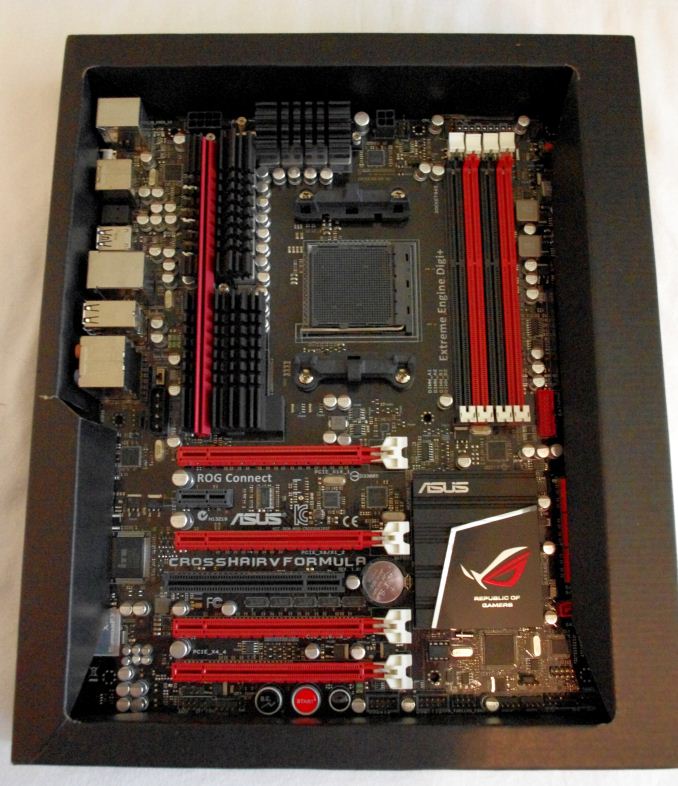

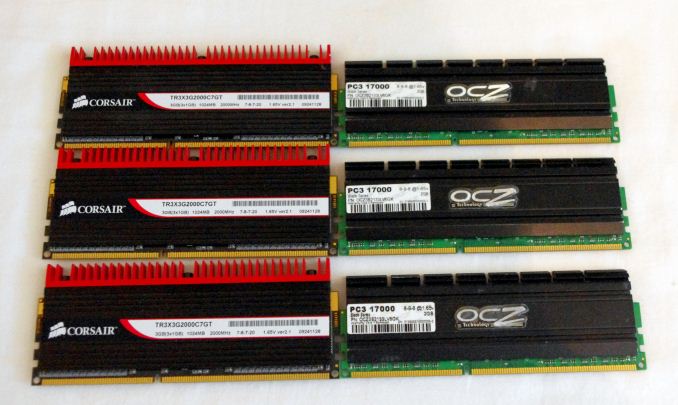
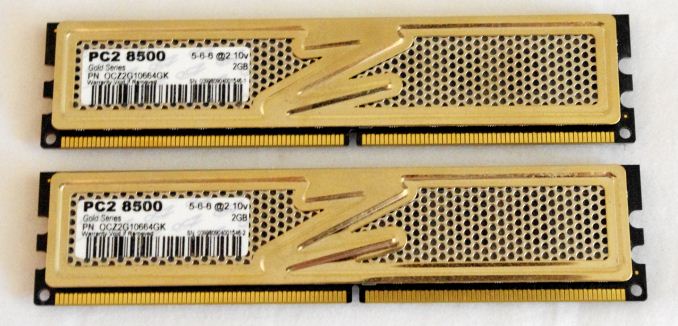








242 Comments
View All Comments
Patrese - Wednesday, May 8, 2013 - link
Awesome article, thanks! Is it possible to include some sort of gaming physics testing? Now that PhysX is beginning to catch some momentum, I'd be great to see if a 8-module AMD processor handles physics stuff better than a 4-core comparable Intel one, and at what point does a dedicated physics card starts to make sense, if at all.I’d be also nice if a “mainstream gaming” article could be made too. Benchmarks at 1080p with cards like the 660Ti and 7850, for instance. No need for 3 way SLI/CF on those, so you'll not need as much time in Narnia. :)
araczynski - Wednesday, May 8, 2013 - link
interesting read, although i find it too focused to be of much general use (or useful future reference). i'd like to have seen for example how an E8500 holds up (too big of a gap between E6500 and i52500), as well as at least ONE game i would even bother playing (skyrim/witcher/etc). and of course like you mentioned, even a slightly bigger sampling of graphics cards. (i think you mentioned that).anywho, i realize this wasn't meant to be anything exhaustive (i do appreciate having the CPU/GPU benches available here as a good reference though), and i do like the detail/explanation length you went into.
so thanks :)
xinthius - Wednesday, May 8, 2013 - link
But AMD offers good price to performance at lower tiers, they should be recommend.yougotkicked - Wednesday, May 8, 2013 - link
Regarding your comments on the role of artificial intelligence in game performance/programming: I've just finished a course in AI, and while implementations may vary quite a bit from game to game, many AI programs can be reduced to highly-parallel brute-force computation, simply evaluating the resulting states of many potential decisions for a numerical representation of their desirability, then selecting the best option from the set of evaluated actions. Obviously this is something that will vary greatly from game to game, but in games with many independent AI managed elements, I would expect a certain amount of the processing to be offloaded to the GPU.Other than that I agree with you on the demands of AI in games; my professor (who specializes in game AI and has experience in the industry) said that the AI is usually given about 10% of the CPU time in a game, so it's rarely a limiting factor.
I'm still working through the whole article (really enjoying it so far) so I'm sure I'll have many more comments/questions later.
IanCutress - Wednesday, May 8, 2013 - link
Based on previous CUDA experience, CUDA doesn't like a lot of IF statements in its routines. So if you're offloading different AI parts onto the GPU, unless all the elements are being put through the same set of if commands (and states), it won't work too well, with some warps taking a lot longer than others if there is large branch deviation. It's a task suited to MIMD environments, like a CPU. Then again, it really depends on the game. Clever AI is already here, because we confine it to a self-created system. One could argue that the bots in CounterStrike are not particularly smart, but the system can put their accuracy up to 100% to make it harder. It's a lot of give and take, perhaps. It is times like these I wish I did CompSci rather than Chemistry :) I need to take one of those MIT online AI courses. You know, inbetween testing!Ian
yougotkicked - Wednesday, May 8, 2013 - link
I suppose conditionals would make offloading some AI components to the GPU impractical, but there still remains a subset of AI computations which seem very GPU friendly to me. State evaluation functions seems like a prime example, the CPU would be responsible for deciding which options to evaluate, building an array of states to be evaluated by the GPU. These situations probably don't come up very often in FPSs, but in something like Civilization I can see it being quite common.I've actually got to head over to that class now, I'll ask the professor if he knows of any AI's using GPU computing in modern games.
airmantharp - Wednesday, May 8, 2013 - link
Like Ian said, GPU's aren't good 'branch' processors, but I do see where you're coming from. Things like real physics, audio environment maps, and pre-render lighting maps could be fed to AI routines running on the CPU. This would allow for a much greater 'simulation awareness' for AI actions.yougotkicked - Wednesday, May 8, 2013 - link
I spoke with my professor and he said that as far as he knows, many people have discussed to prospect of using GPU's for AI, but nobody has actually done so yet. He's going to ask some friends of his at some major game studios to see if they are working on it.He did agree with me that there are some aspects that could be computed on a GPU, but a lot of the existing AI methods are inherently sequential, so offloading it to the GPU will require new algorithms in many cases.
TheQweaker - Thursday, May 9, 2013 - link
You may wish to check nVidia's GTC conference web site where you can find some GPU AI Research. Also, nVidia published various PDF slides on GPU Path Planning.If you look deeper in some specific AI Domains such as, say, AI Planning (first used in F.E.A.R. in 2005, lately used in KillZone 3 and Transformers 3: The Fall of the Cybertron) you can find papers investigating the use of GPUs.
On of the bottom line of current GPU AI research is that GPUs crunch large numbers of data very fast so, currently, there is not much hope in using the many GPU threads for tiny amounts of data of state space search.
Hoping this helps.
-- The Qweaker.
yougotkicked - Thursday, May 9, 2013 - link
Thanks for pointing me towards those papers, they look pretty interesting and I've been looking for a topic to write my final paper on ;)